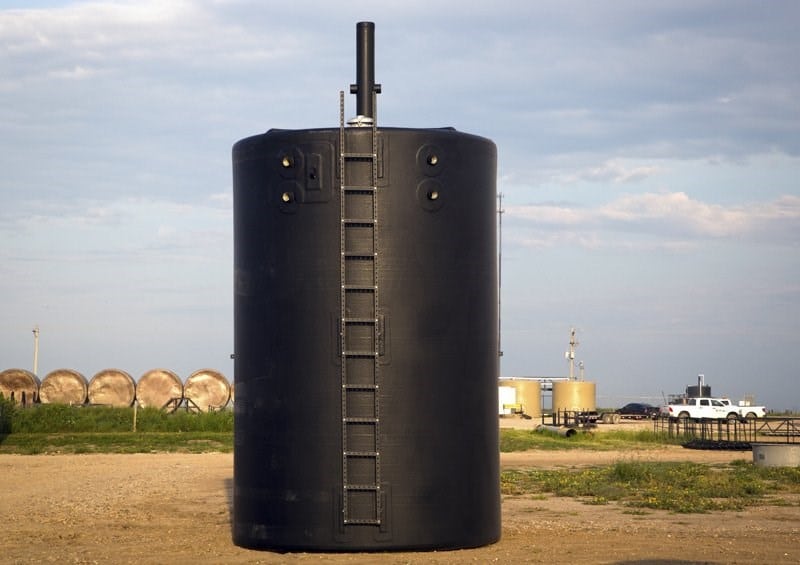by Bill Ball

Introduction
The oil and gas industry is one of the oldest sectors, with a long history of innovation and evolution. However, it’s also an industry that holds tightly to certain myths, often at the expense of progress. The field of oil-water separation, critical to oil production, is a prime example where outdated practices have hindered advancements. In this post, we’ll explore the history of oilfield separation, debunk some persistent myths, and look at how modern technology is addressing today’s challenges.
The Origins of Oil-Water Separation
The story of oil-water separation began with Edwin Drake’s well in 1859, the world’s first successful oil well, drilled in Titusville, Pennsylvania. Back then, separation was a rudimentary process—Drake used a bathtub to separate the oil from water, letting the water flow into a nearby creek. It was a crude method, but it laid the foundation for the separation technologies that followed.
By the late 1800s, oil-water separation techniques had progressed with the introduction of settling tanks. These early tanks, made of wood and constructed like large barrels, were used to allow oil to settle while water and impurities were removed. This marked the beginning of the industry’s first systematic approach to oilfield separation.
The Myth of “Separation is Separation”
A common myth in the oil and gas industry is that “separation is separation”—that is, the process of separating water from oil is the same as separating oil from water. This misconception has persisted for decades, influencing the design of equipment and the operational methods used in the field.
In reality, separating water from oil is a completely different process from separating oil from water. Water tends to be denser than oil, and when the goal is to remove oil from water, different equipment and techniques are required. Many of the older systems, such as gunbarrel tanks, were designed for oil-centric separation, which often leads to inefficiencies when applied to high water-cut conditions. Understanding this distinction is crucial for improving separation processes in modern operations.
Gunbarrel Tanks and Water Legs: Early Innovations
The gunbarrel tank, an innovation from the late 19th century, became a critical component of early oilfield separation technology. These tanks worked by allowing oil and water to settle into layers, with the water being drained out through a device known as a “water leg.” This simple but effective mechanism controlled the oil-water interface, making it easier to separate the two fluids.
Gunbarrel tanks served the industry well for decades, especially in low water-cut scenarios. However, as the volume of water produced by oil wells increased, particularly after the introduction of secondary recovery techniques like waterflooding, the limitations of these tanks became evident.
The Challenges of Modern Water Cuts
One of the most significant shifts in oil production over the past century has been the increase in water cuts—the ratio of water to oil produced from a well. In the early days, oil wells produced little or no water. Today, it’s common for wells to produce ten or even one hundred times more water than oil. This dramatic increase in water volume has placed new demands on separation technology.
Unfortunately, many operators have been slow to adapt, clinging to the myth that older equipment, like gunbarrel tanks, can handle these high water cuts. In reality, modern separation requires more advanced systems designed to efficiently remove small amounts of oil from large volumes of water. Only by abandoning outdated myths can the industry continue to thrive in the face of evolving challenges.
Conclusion
Oilfield separation has come a long way since the days of bathtubs and wooden barrels, but some myths still persist. Understanding the distinction between oil-from-water and water-from-oil separation, and recognizing the limitations of older equipment like gunbarrel tanks, is essential for improving efficiency and productivity in modern operations. By embracing new technologies and abandoning outdated practices, the oil and gas industry can meet the challenges of the future head-on.
Read the technical paper, Separation in Oilfield Operations “Myths versus Realities”
Bill Ball is a senior staff consultant to KBK Industries with over 50 years of oilfield engineering experience and holder of twenty-three oil and gas industry related US patents. His credentials represent the culmination of a lifetime of breakthroughs and innovations. Bill’s twenty-three US process equipment patents speak to this. His first patent has become an industry “game changer.” It is the industry’s first true oil-water separation “skim tank”, the “HWSB”. Today there are over 3,500 HWSB® skim tanks separating and capturing oil that used to be injected and lost forever. Bill resides in Bixby, a suburb of Tulsa, Oklahoma.
